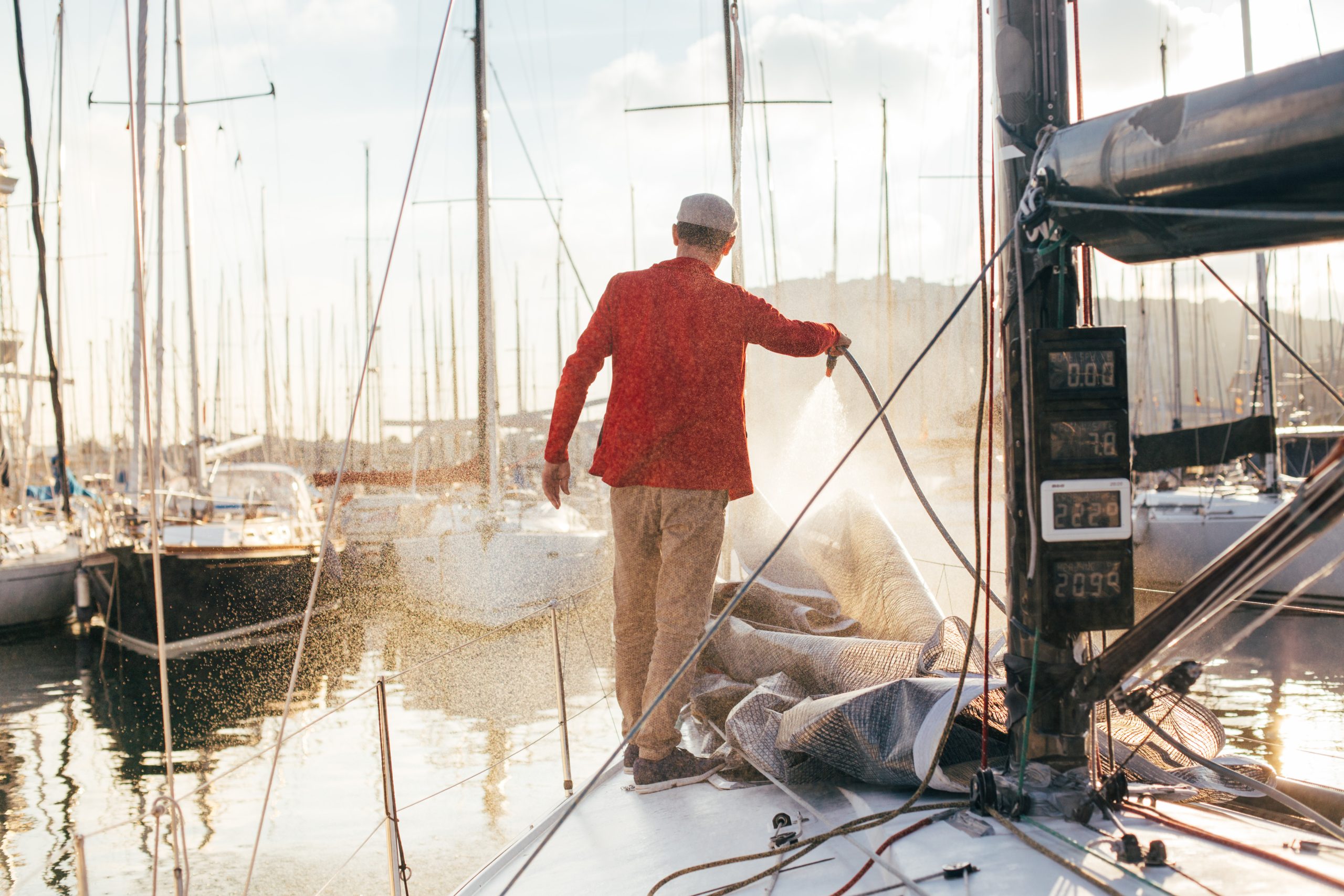Thousands of Pleasure Boats Reach Their End
Each year, a significant number of pleasure boats reach the end of their life cycle. The French dismantling industry, supported by organizations like APER (Association pour la plaisance éco-responsable), is evolving to address this challenge. This article examines the types of vessels involved in the dismantling process, their origins, and the fate of their materials.
Current Trends in Yacht Dismantling
From 2019 to 2024, APER has observed essential trends within the yacht dismantling sector, focusing on the types of end-of-life boats, their clientele, and the materials that undergo processing. The data collected indicate a significant diversity of cases requiring meticulous sorting, treatment, and recovery methods. Let’s delve into the specifics.
The Dominance of Monohull Powerboats and Dinghies
Monohull powerboats lead the statistics, making up 35.83% of new builds, with dinghies under six meters following closely at 29.59%. Monohull sailboats represent 28.86%, while other categories such as semi-rigid boats (3.66%), inflatables (0.95%), jet skis (0.79%), and multihull sailboats (0.32%) account for a much smaller volume. This distribution points to a French yachting fleet primarily composed of coastal motorboats and standard-sized sailboats, commonly stored dockside or on trailers. Logistical challenges arise depending on the size, condition, and accessibility of these vessels.
Private Individuals: The Primary Source of Waste
Private individuals constitute the largest group contributing boats to the dismantling process, accounting for 49.55% of units. Other contributors include yacht clubs (23.25%), yachting professionals (10.82%), local authorities (7.14%), marinas (5.17%), and a smaller percentage from administrations and associations. This mix necessitates close cooperation between treatment centers and local stakeholders to manage the removal and proper processing of these boats, following a standardized procedure irrespective of the source of the order.
Material Composition and Recycling Challenges
Regarding material composition, composite materials prevail, with 68.84% of dismantled boats made primarily of polyester/fiberglass laminate. Ferrous metals make up 13.65%, while wood accounts for 12.02%. Non-hazardous waste, including textiles and foams, constitutes about 4.5%. The remaining materials include various fluids, plastics, and non-ferrous materials. The existence of composites presents recycling challenges, as they are more commonly repurposed for energy rather than mechanical recycling. In contrast, metal components tend to follow traditional recycling channels.
Diverse Management Challenges According to Vessel Types
Diversified types of boats—from small dinghies to larger sailboats—impose various technical management approaches. Regardless of boat type, the treatment process remains standardized across pre-cleaning, dismantling, material sorting, and recycling or landfilling any waste. Approved centers must possess specific expertise for varied cases, as many decommissioned boats still harbor operational fluids, lead batteries, neglected engines, or even asbestos, particularly with older models, which emphasizes the importance of regulatory traceability.
The Role of Extended Producer Responsibility (EPR)
The introduction of the EPR (Extended Producer Responsibility) model for pleasure boats mandates producers to manage end-of-life units. APER functions as an eco-organization, orchestrating the flow of these vessels. This model has dual objectives: relieving ports and waterways of abandoned vessels while fostering environmentally-friendly management of boats throughout their lifecycle. As the sector progresses, enhancing collection logistics and increasing treatment capacity nationwide remain critical challenges.
The Environmental Impact of Dismantling Practices
The dismantling process significantly contributes to environmental sustainability. By properly managing and recycling materials from old boats, industries can help reduce waste and lower the carbon footprint associated with boat production and disposal. Furthermore, as the sailing community becomes increasingly eco-conscious, the importance of responsible dismantling practices will likely grow, influencing regulations and consumer choices.
The Adventure of Renting Boats
As environmental and sustainability concerns continue to influence tourism and leisure activities, understanding the lifecycle of boats emphasizes the importance of responsible boating practices. As a devoted sailing enthusiast, using platforms like GetBoat empowers customers to make informed choices about boat rentals, ensuring enjoyment on the water while being mindful of ecological impacts.
Onvergetelijke ervaringen creëren
At GetBoat, the emphasis lies on providing opportunities for unforgettable experiences by offering a wide array of vessels catering to all tastes and budgets. Whether it’s a romantic getaway or a fun-filled trip with friends, clients are encouraged to explore and select boats that align with their desires. The platform not only delivers transparency on boat specifications, but it also allows users to view ratings and reviews before making a decision.
The Multifaceted Nature of Travel
Engaging in new explorations is a rich and multi-layered experience that goes beyond sailing. Each new destination unveils distinctive elements of culture, nature, and local life, equipping travelers with an invaluable understanding of their surroundings. For those preparing a seaside escapade, considering boat rentals can add an extra layer of richness to the journey. Each bay, inlet, and lagoon awaits discovery, revealing its treasures akin to the local cuisine, architecture, and vibrant cultureGetBoat.com.
Conclusion: Embracing Freedom on the Waves
In summary, the complex and evolving dynamics surrounding boat dismantling highlight the intricacies of the maritime world. Integrating solutions like GetBoat ensures that visitors enjoy transparent, user-friendly access to the joys of sailing—whether through renting or purchasing boats, yachts, or sailboats. As the journey continues into the exciting waters of exploration, remember that every experience contributes to the grand narrative of maritime adventure and environmental consciousness. Embrace the freedom of the sea and embark on your next boating experience today.
Ultimately, whether one is interested in sailing or simply appreciates the beauty of the ocean, understanding the dismantling industry sheds light on the ongoing journey of every boat. It’s a reminder of the ever-changing nature of our maritime adventures—one lighthouse at a time.


